Following a particularly stressful work contract, we felt in dire need of a rest. There are few better places to regain your soul than an island in the South Pacific, so we rented a beach hut in Fiji.
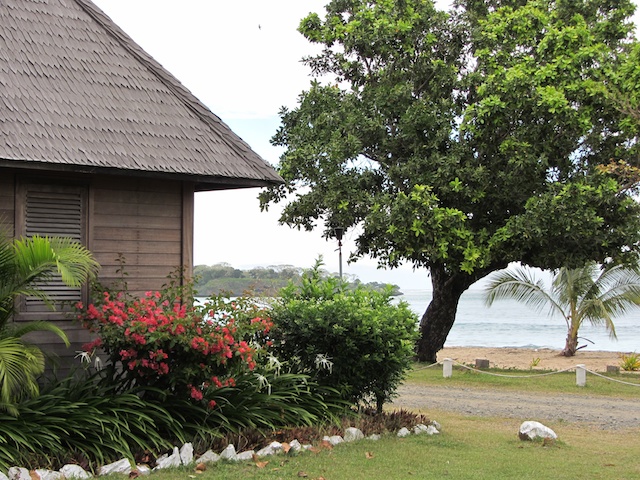
Yatule Beach Resort
Our little hut (bure) did not come cheap, but on our first morning we lay in bed and listened to the surf thundering outside, and began to feel the first vestiges of peace. Our window looked out across the bay to the fringing reef. As far as we could tell, we were the only guests in this little cluster of huts, but staff were already sweeping the famous Natadola Beach of flotsam from the night’s tide, ready for our first dip of the day.

Apart from a handful of bure, the Yatule Beach Resort has a simple bar and an even simpler restaurant, really just a cafe. After trying out a few of the local beers in the bar, I decided to try the local rum, Bounty, which had been recommended by our taxi driver as the best cure for my persistent cough. The suggested mixer was coke, but that just makes all rum taste the same, so I asked if they had any sugar cane syrup, a traditional mixer in many rum-producing countries. They didn’t, so Bronwyn suggested that coconut juice might be a nice compromise, but this threw the staff into consternation and they went into a huddle behind the bar. Finally after some close deliberation the waiter returned, all smiles, to say that rum and coconut juice was available, and would only be a moment.
Seconds later, the barman left the building at a run and returned, panga in hand, with a freshly dressed coconut the size of my head containing not only coconut juice but also ice, a straw, and enough rum to fell a camel.
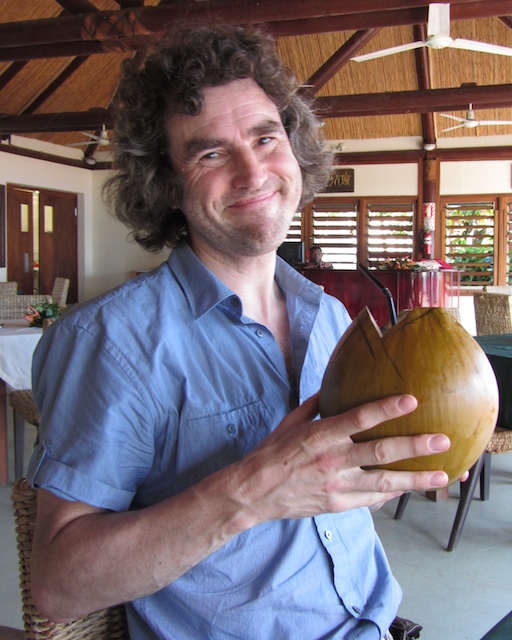
The Intercontinental
A few hundred metres along Natadola beach is the Intercontinental, which bills itself as “seven star”. We weren’t sure what that was supposed to mean, so we resolved to find out. On our first foray there one evening, we discovered that all the bars and restaurants had already closed. On the following evening we popped over a bit earlier to find both “cocktail happy hour” and “local cultural entertainment” in full swing. As usual, you’re never really certain how much genuine culture goes into these shows, but the participants were certainly having fun and were keeping the Intercontinental guests enthralled.
For my part, I was more fascinated by the onlookers themselves. The Intercontinental has exorbitant room rates, and we were curious to see what kind of people stayed there. We’d dressed up a bit in case we needed to fit in with ball-gowns and tiaras, but instead found ourselves surrounded by English families in sports clothes and sun-dresses. Innumerable face-painted children were being chased around by cheerful hotel nannies, and seven-year old kids were running around recording the chaos laden with high-end camera equipment.
The staff were reasonably attentive but the cocktails were poorly thought out, and the wine menu was very interesting. At one end of the range they had Veuve Cliquot, and at the other they had Gossips, which is infamous in Australia for being the absolute cheapest red plonk that you can buy in a bottle, retailing for about $3. It is all but undrinkable, and was available at the Intercontinental for $30.
When the guests all vanished into the dining room, we briefly considered joining them, and then slipped back down the beach to our quiet little bar instead. We did however return on another occasion to try out the Intercontinental’s “fine dining” restaurant, which was quite the experience. All the ingredients were on spectacular display on a mound of ice, including some amazing striped rock-lobsters that we just had to sample, preceded by sashimi, sushi and bouillabaisse. The service was exemplary, the food wonderful, and the bill enormous, coming in at around $700 for the two of us.
The Natadole
In marked contrast, on another occasion we wandered over to a small hotel complex called The Natadole, comprising a small network of rooms interconnected by a series of walls and openings which promoted a gentle cooling breeze. We ate several excellent meals of similar quality to the Intercontinental but much cheaper and friendlier. The Natadole only has a handful of bure and they don’t accept guests under the age of 16, so it has a completely different ambience. In Fiji the food portion sizes are always rather small and the drink measures rather large, so the manager Tonga always sent us away reeling and happy.
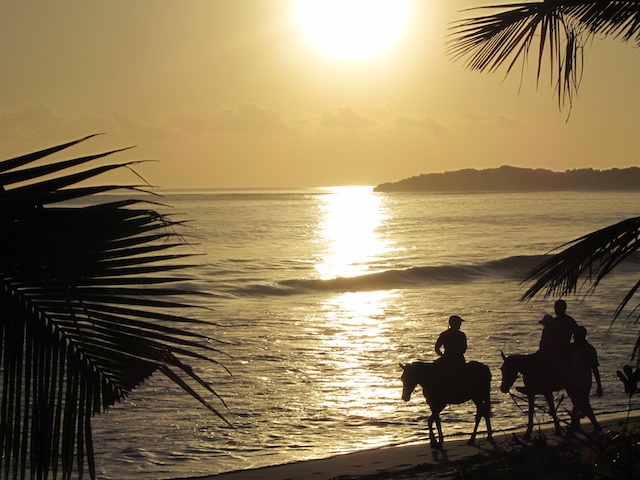
Island Time
Slowly we began to unwind. It doesn’t take long in the South Pacific. Sitting in our bure after a gentle swim in the ocean and a leisurely breakfast of fried eggs, rice and papaya, washed down with coffee, we idly watched people work outside our verandah.
The hotel staff had dug an enormous hole in the sand above the tide line, and were emptying into it wheelbarrow-loads of littoral debris that had washed in overnight. Some really big stuff came in each day on the tide, and out in the water we also found ourselves sharing our swim with very large fish, possibly even some kind of tuna, as well as the occasional log or fallen tree.
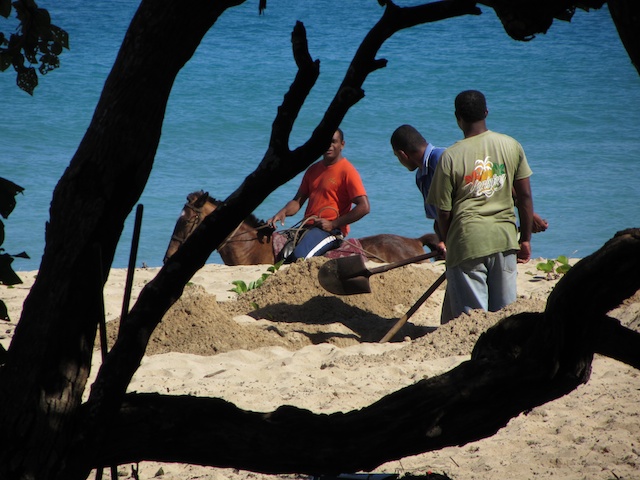
Away from the beach
Obviously the whole Natadola beach area, while on the face of it beautiful and idyllic, is a managed environment for tourists. Chatting to the staff at various resorts, we’d found that they all live in a village at the end of the beach, so we set out to have a look. This entailed following an old railway line through the woods and over into the next bay, accompanied by cheerful staff commuting between shifts, and a large number of goats.
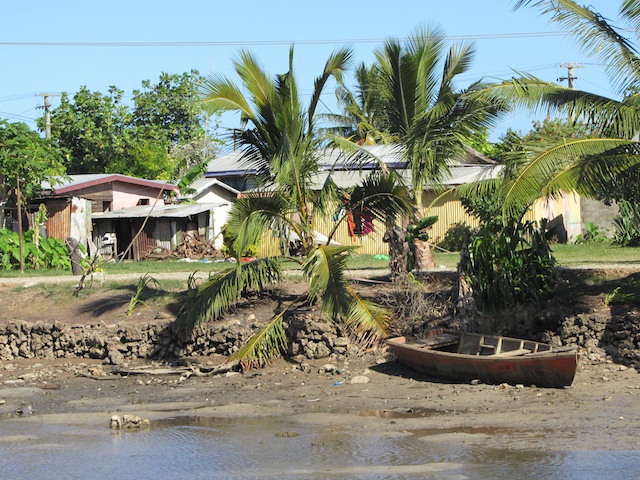
We finally arrived at the village, which consisted of simple buildings built largely from corrugated iron, most with a single fluorescent tube lighting the doorway. Kids and chickens played in the dust, and adults on well-groomed horses peddled optimistically for rides while elders sat in the shade, selling piles of oranges.
At first we couldn’t understand why, even here, there was a fledgling tourist industry. Surely not too many tourists came through this way? All became clear when we emerged from the other side of the village and onto the Natadola Bay golf course, the local attraction which the Intercontinental was built to service. We had passed an old sugar-cane train parked on the tracks, perhaps in other seasons it runs to the village and guests can then walk or ride to the golf course.
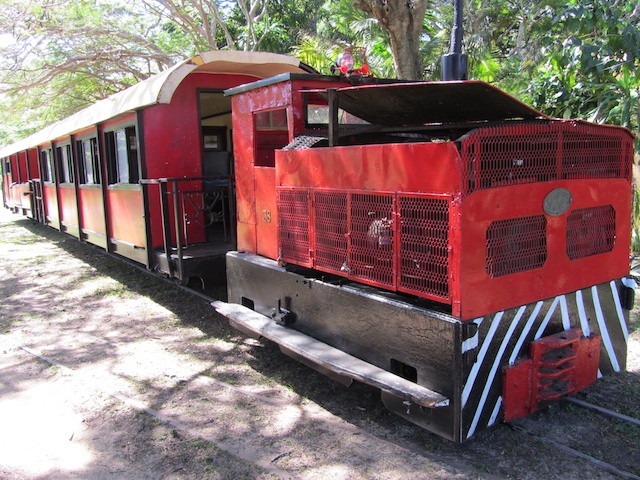
Out on the first tee, a smart security guard in a booth politely but firmly asked where we were going and where we were staying. He then waved us cheerfully through, but we ran into these guards everywhere, apparently ringing the entire beach and golf course. Ostensibly they were there to protect the guests from theft, but I suspect that they were really intended to prevent locals from using the facilities (perhaps unless they looked sufficiently colourful). At any rate, nobody was playing golf that day, so we had the place to ourselves.
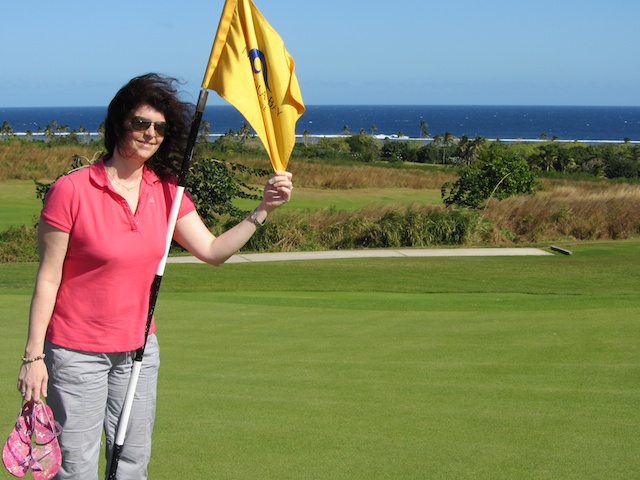
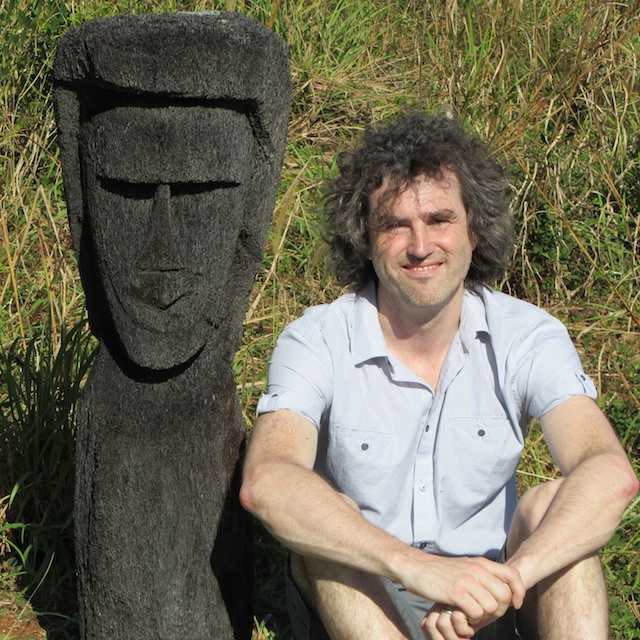

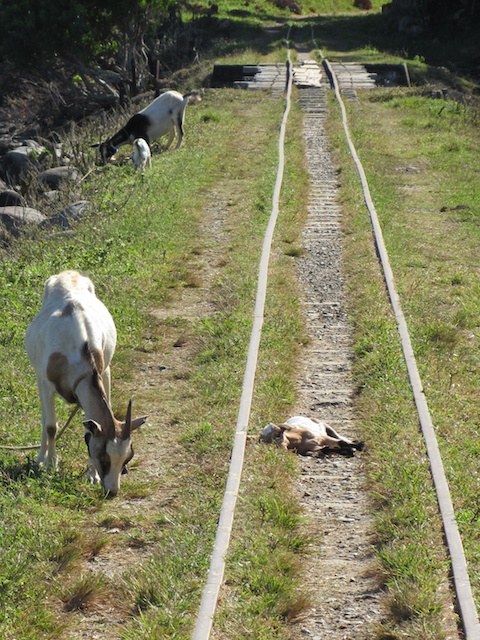
Bula Reinhard- loved reading your post! Hope your memories of Fiji ensure you relive the magic of the South Pacific! We’re on our way back to Beqa after 36 years of being wage slaves in the U.K. We’re planning on setting up a beach bar on the island and a mountain retreat in the highlands of Vito Levu. Not for tourists – just for our family and friends! But you’d be very welcome too – though perhaps you never left and are still mooching around Natadola a decade on from your post! Wouldn’t surprise me at all…
Thanks again for posting the lovely photos
Linda and Epeli